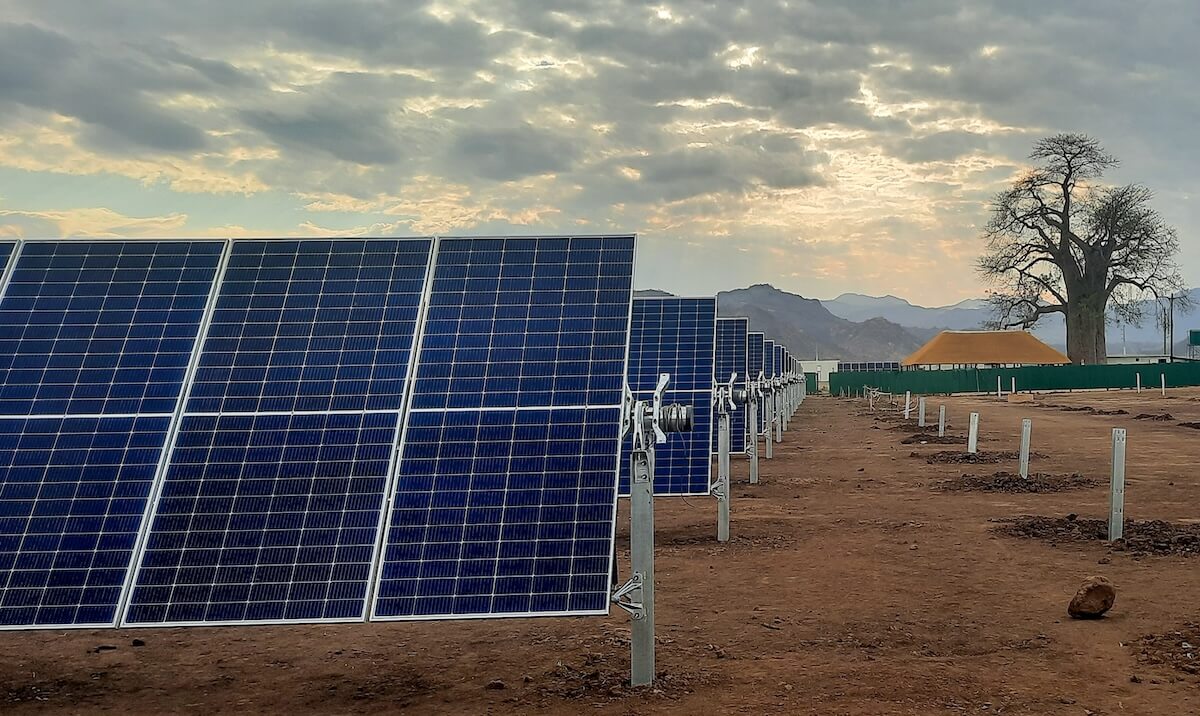If climate action were a technology innovation (which it increasingly is) the 2015 approval of the Paris climate agreement may represent the Peak of Inflated Expectations.
Students of the tech ‘hype cycle’ will recognize the past year’s Trough of Disillusionment – rollbacks of key initiatives, the ascendance of climate-skeptic politicians, a cascade of dire forecasts and, by end of year, a clear increase in carbon emissions.

According to plan, the mass mobilization to forestall climate catastrophe would climb the Slope of Enlightenment toward the Plateau of Productivity that is the low- or no-carbon economy.
We’ll know by 2030, if not 2020, whether we climbed that slope fast enough to avert the worst of the climate catastrophe. In the next dozen years, climate experts say, we must cut greenhouse gas emissions at least in half, on the way to a net-zero economy by 2050.
The expectation that we’ll meet that challenge is essential for making it so: optimism may or may not be self-fulfilling, pessimism surely is.
Delegates to last week’s COP24 climate talks in Katowice, Poland did their part by gutting out an overtime agreement to a “rulebook” to keep the momentum of Paris alive.
In the spirit of the season, here are a dozen reasons to be optimistic, with links to key coverage this year:
1. Exponential progress.
You’ve heard of Moore’s Law? Get ready for the Global Carbon Law. Falling prices and increasing performance of clean energy, battery storage, electric vehicles and other solutions makes it possible to peak emissions by 2020 and halve them every decade thereafter, a compounding reduction of about 7% per year. “Unstoppable forces” are pushing decarbonization faster than anyone predicts, says former U.N. climate chief Christiana Figueres. “Disruption is here.” This year’s Sustainability Trends Report from Generation Management documents that disruption. Says Generation’s Colin le Duc, “Our assertion is that it’s just accelerating.”
The Impact Alpha: The climate-finance tipping point is here, and other blue-sky thinking
-
Increasing capital.
Global climate-finance flows ticked up about 15% to between $510 and $530 billion in 2017, an improvement from 2016, when climate financing actually fell. Reality check: October’s report from the U.N.’s Intergovernmental Panel on Climate Change calculated the need for annual energy-system investment of between $1.6 and $3.8 trillion to keep global warming below 1.5 degrees Celsius. “While these increases are undoubtedly good news, we are still falling far short of what is needed to transition the overall economy to a low-carbon, climate-resilient future,” concluded the Climate Policy Initiative, which surveyed the available data.
-
Divide and conquer.
Oil companies, utilities, banks, countries – in every sector there are leaders and laggards. That sets up a natural experiment between those planning for the low-carbon economy and those counting on business-as-usual. European oil and gas majors, for example, are hedging their climate risks. Shell, under pressure, agreed to link short-term carbon emission reductions with executive pay. Maersk, the world’s largest container shipper, pledged to be carbon-neutral by 2050. The big question: Will leaders be rewarded for their leadership, and the laggards punished?
-
Institutional shift.
Shell’s concession came after pressure from Climate Action 100+, institutional investors representing $32 trillion in assets that are targeting the biggest greenhouse gas emitters. Major pension funds are telling companies there are ‘no excuses’ for inaction. Dutch pension giant ABP has a pledge to nearly double its $3.5 billion investment in renewables by 2020. Canada’s La Caisse de dépôt et placement du Québec is going from $16 billion in low-carbon investments to $24 billion or more by 2020. Says Stanford’s Ashby Monk, “The beauty of focusing on the asset-owner community is that if you can even move them even one or two degrees off their north star, you’re going to move trillions of dollars.”
Can $30 trillion in global assets drive companies to climate disclosure – and climate action?
-
Green bonds.
Bonds issued for energy efficiency, clean infrastructure and other green purposes were at one point forecast to reach $250 billion this year, up from $163 billion in 2017. That target won’t be met, but the bonds still represent the mainstreaming of green finance. Banks have rolled out their own commitments and targets as they gear up to navigate. A leading indicator: October’s $61 million tax-exempt municipal bond to refinance a biodigester that turns dairy cow manure and other waste into renewable natural gas, a signal that “green distributed infrastructure” could scale rapidly with lower-cost capital.
-
Michael Bloomberg.
The billionaire former mayor of New York City is on the hook to deliver private capital commitments in time for U.N. Secretary-General António Guterres’ climate finance summit next September. Bloomberg’s one-year Climate Finance Leadership Initiative is looking to San Francisco’s Global Innovation Lab for Climate Finance, which has launched nearly three-dozen financing vehicles that have mobilized more than $1 billion.
-
Accounting is destiny.
The Task Force on Climate-related Financial Disclosures has become the bible for assessing climate risks. The task force was chaired by Michael Bloomberg under Mark Carney, governor of the Bank of England and chair of the Financial Stability Board. “Climate change is the tragedy of the horizon,” says Carney. “We don’t need an army of actuaries to tell us that the catastrophic impacts of climate change will be felt beyond the traditional horizons of most actors — imposing a cost on future generations that the current generation has no direct incentive to fix.”
-
Price on carbon.
More than one-fifth of global greenhouse gas emissions are now covered by national and subnational (think California) carbon-pricing schemes. Another 88 nations representing an additional 56% of emissions are considering such carbon pricing. The price is still too low, but the value of carbon taxes and carbon markets was expected to reach $82 billion in 2018, up from $52 billion last year. “The heat is on…for financing climate action.”
-
Adapt or die.
A climate changing more rapidly than forecast means we now also need a crash investment strategy for climate-change ‘adaptation.’ Climate funds thus far have struggled to attract capital for adaptation projects, which are viewed as riskier, often involving technology experimentation, policy making, and systems change. Public and philanthropic investors are starting to juice returns or lower risk for commercial investors with currency- and first-loss guarantees and early-stage support to meet the growing demand for adaptation finance.
-
Energy access.
Off-grid energy access is gaining investment traction. About 100 million people a year are gaining energy access each year, likely pushing the number of people worldwide without electricity below one billion in the coming year. A new crop of intermediaries is filling capital gaps. The solar mini-grid project pipeline is coming into focus in Africa, Asia and Latin America.
-
Climate populism.
Trump might be pulling out the Paris climate agreement, but hundreds of cities, states, businesses, universities, and others have stepped up to say, “We are still in.” America’s Pledge has highlighted 10 immediate, non-federal emissions-reduction opportunities. Ideas like Rep.-elect Alexandria Ocasio-Cortez’s Green New Deal are gaining traction by linking climate action to widespread job creation and economic opportunity.
Running to stay ahead of the storm…and the climate catastrophe
-
The ReGeneration
Young people aren’t waiting for permission to lead the carbon-free future. Those born since about the turn of the century, sometimes called Generation Z, are more numerous than the baby boomers or the Millennials and likely even more consequential. A lawsuit brought by 21 teenage plaintiffs seeks to hold the federal government responsible for failing to act, and even abetting, climate change.
In Poland, protests at COP24 were inspired by the call by Greta Thunberg, a 15-year-old Swede, for a global school walkout to demand climate action. Dozens of Polish students answered the call and marched into the conference center with a sign: “12 years left.”
Young people aren’t waiting for permission to lead the reGeneration











